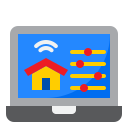Foundations: Building a Remote Productivity Tool Stack That Fits
Write success in sentences: faster code reviews, fewer context switches, clearer ownership. List the work rituals you want to protect. Choose tools that make those rituals easier, measurable, and repeatable without adding heavy admin overhead.
Foundations: Building a Remote Productivity Tool Stack That Fits
Favor tools that capture context when you are offline—rich docs, recorded walkthroughs, and threaded discussions. Async-first reduces meeting load and preserves deep work while still leaving a transparent trail of decisions for anyone joining later.






